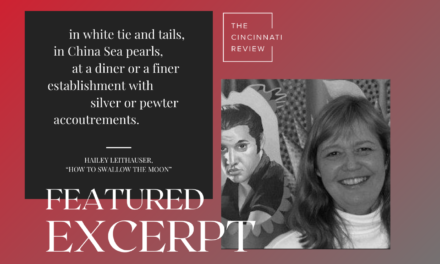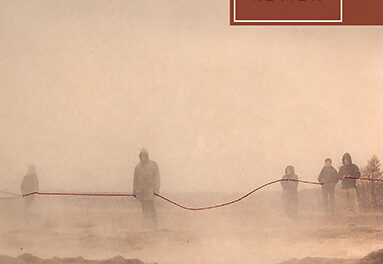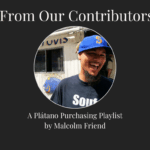We are pleased to share this review by Jess Jelsma Masterton of Jeannie Vanasco’s Things We Didn’t Talk About When I Was a Girl (Tin House Books, 2019), which appeared in Issue 18.1 as part of a special multigenre review feature on art and activism (read the entire feature here):
During my first creative-nonfiction workshop, a classmate asked a question about character motivation. He didn’t understand why my narrator, a twenty-three-year old version of me, had chosen to stay in an emotionally abusive relationship. From his perspective as a reader, it was hard to buy into a personal essay that didn’t operate within a structure of familiar causes and effects. As a writer, I’d neglected to adhere to the expected “trauma memoir” arc: an innocent victim gains the strength to escape a much-reviled villain.
In revisions, I struggled to impose the narrative frameworks my peers had suggested. The neat explanations felt false, like I was writing a highly flattened version of myself. My experience was not cohesive. The logic never fully made sense. To pretend otherwise was to ignore the reason I’d turned to essay writing in the first place: to explore an uncomfortable space, one that was far more messy and self-implicating than it was a shocking Lifetime movie.
Since then, I’ve made it my mission to seek out nonfiction that privileges transparency over tidy narration. Time and time again, I’ve returned to fragmented memoirs like Roxane Gay’s Hunger (HarperCollins, 2017) and Terese Marie Mailhot’s Heart Berries (Counterpoint Press, 2018), books that expose the real, imperfect, and vulnerable self, to arrive at some greater truth.
Jeannie Vanasco’s second memoir, Things We Didn’t Talk About When I Was a Girl, is just such a book. The project, as she often calls it, attempts to make sense of a sexual assault by initiating a conversation with her rapist, a close high-school friend she assigns the pseudonym Mark. Fourteen years after the attack, Vanasco decides to write about the experience, sending an e-mail that sparks two phone conversations and a final face-to-face visit.
Formally, the memoir eschews linear narration in favor of short themed chapters that invite the reader into the writing process. Through transcripts of phone calls, e-mails, and conversations with her friends, editor, and therapist, Vanasco grants us an insider look at the crafting of the project—from idea, to initial contact, to her fears about how the book will be marketed and received by a #MeToo audience.
From the opening section, Vanasco is transparent regarding her many uncertainties about the project. She puzzles over what she will do if Mark ignores her interview request, debating whether she needs his consent to write the book. She researches “legal considerations” for recording conversations and questions her desire to include Mark’s voice in a memoir about her attack. She openly struggles with her urge to portray her rapist in both a positive and negative light, writing, “I want readers to like Mark, to see why I trusted Mark, to think, Of course Jeannie wouldn’t have expected him to assault her. That way, his betrayal will seem as unthinkable and unexplainable as it seemed to me then—because, while I know it’s not my fault, some part of me still blames myself for trusting him.” It is not until their second phone conversation that she works up the courage to define what happened between them as rape. With each new doubt and hesitation, she lays bare her perspective as a survivor of traumatic rape, one that is far more uncertain and conflicted than popular media often portrays.
Once her dialogue with Mark begins, Vanasco includes full transcripts of their conversations. She interrupts with frequent asides that analyze and, at times, express anger and confusion about what has been said. Readers eavesdrop as she consults with her editor and friends, trying to make sense of one of Mark’s explanations or her own inability to hold him accountable for the attack. As she transcribes the moment where Mark admits to the assault, she pauses to “rewind and listen to the recording” repeatedly, baffled by her lack of expected vindication. She is annoyed by her conciliatory language, her frequent use of phrases like “I hope you know that I don’t hate you” and “I really appreciate this.” “Mortified isn’t strong enough” to describe how she feels about the transcripts, which is exactly why Vanasco knows she must include them in the final project. From a craft perspective, the recordings allow readers to see her performance of gender play out on the page—the same appeasing behavior that many a defense attorney has pointed to as proof of his client’s innocence. As the logic goes: if a survivor is cordial with her attacker, then the assault couldn’t have been that bad, could it? By juxtaposing the transcripts with her emotional reactions and analysis, Vanasco helps the reader grasp the long-lasting impacts of her attack. Even fourteen years later, the accomplished writer and university professor struggles to assert herself when faced with her rapist. Like so many survivors, she is “imperfect,” failing to live up to mainstream depictions of appropriate victimhood.
Rather than shy away from this potential criticism, Vanasco addresses it head on. She is acutely aware that her “reaction to Mark” might “disappoint other feminists” who expect her to be angry at him. She is ashamed of her desire to include her rapist in the memoir, scrutinizing her assumption that the assault “isn’t interesting without him.” She questions how her narrative fits into the #MeToo movement—whether she started the book, in part, because she knew it would sell well in the current climate. As news of Trump’s family-separation policy hits, she grapples with the role of art in activism, wondering how she can focus on the project when the government is “committing blatant human rights violations.” She goes so far as to ponder what she hopes young readers will take away from the narrative: the message that, no matter how they might react to a sexual assault, they are not alone.
This type of metacommentary is not usually found in the pages of a published book. Such questions are typically relegated to an author interview or a creative-nonfiction workshop, spaces where writers are asked to reflect on their intentions and use of craft. To ponder these decisions out in the open—in fact, to frame much of the book around them—is to take a risk, especially with a mainstream audience. While fellow writers may revel in discussions of interview ethics and craft, others may find that the commentary serves to obfuscate what actually happened. As for me: Vanasco’s questions served as a balm for my own insecurities, reminding me that other memoirists struggle with fears of backlash and not being believed.
In this way, Things We Didn’t Talk About When I Was a Girl is not so much about Vanasco’s assault as it is about her attempt to narrativize the attack. To read the book is to witness her attempts to “take charge of the material,” cutting and rearranging the details to gain “some sense of control.” If she neglects to uncover the reason Mark raped her, it is not due to her failure as a writer but due to the operating status of our culture. There can be no series of familiar causes and effects, no expected narrative arc, when sexual assault remains an “aside” to men like Mark. By bringing the inner workings of her process to the forefront, Vanasco creates a road map for other writers and activists, carving a path laid with radical transparency.
Jess Jelsma Masterton (she/her) is currently a visiting assistant professor of English at Albion College in Michigan. Her short stories, essays, and audio memoirs have recently appeared in Southern Review, The Arkansas International, The Normal School, and Quarterly West. Read more at jessejelsma.com.











